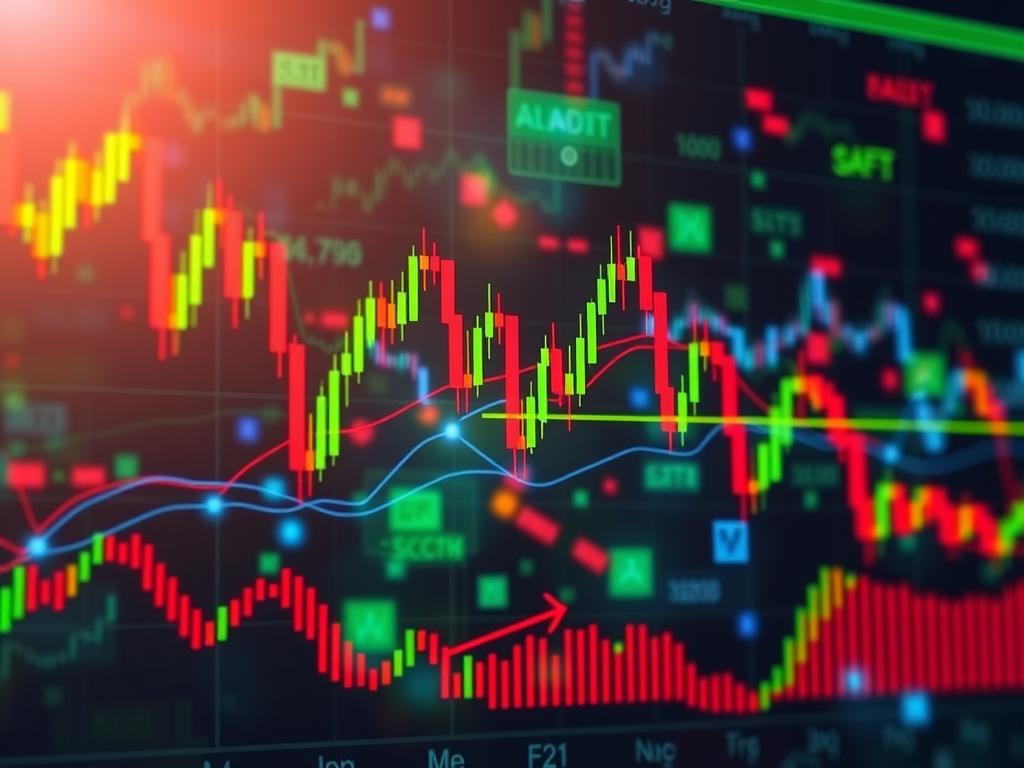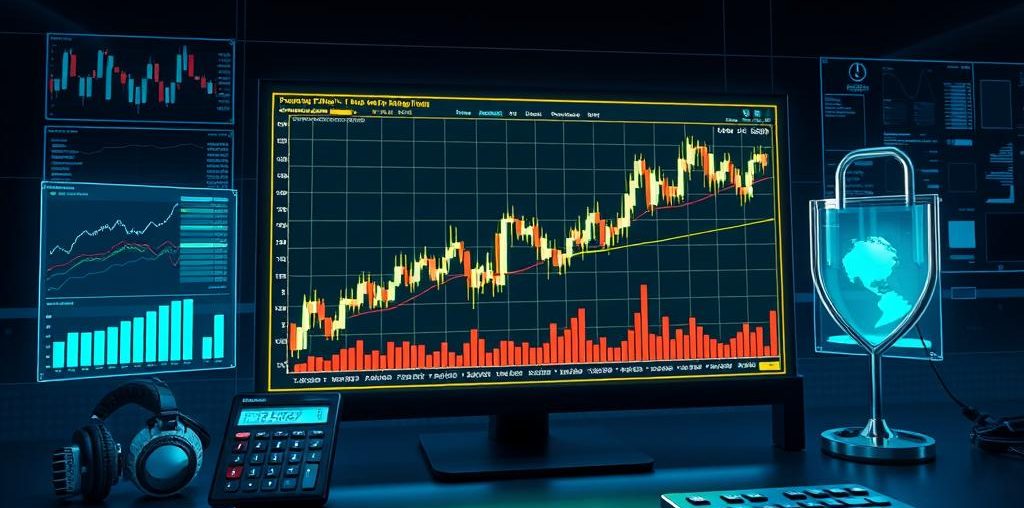The foreign exchange (forex) market is full of opportunities for traders. It’s perfect for those new to forex or looking to improve their skills. Learning the best forex trading strategies can lead to steady profits. We’ll cover the basics of the forex market, the importance of analysis, and how to manage risks.

Forex trading involves exchanging one currency for another. It’s popular among both experienced and new investors. The market’s vast liquidity, 24/7 trading, and big profit potential make it attractive. But, it’s crucial to understand the market, use the right tools, and manage risks well. This article will teach you how to succeed in forex trading, from the basics.
Understanding the Forex Market
The forex market is a global place where currencies are traded. It’s the biggest and most liquid financial market, with over $6 trillion traded daily. Knowing the basics of the forex market is key to making good trading plans.
What is the Forex Market?
The forex market is where people exchange one currency for another. It’s a fast and dynamic place, with trading happening 24/7, five days a week. Banks, financial institutions, corporations, and individual investors all play a part, aiming to make money from changes in currency values.
Key Currency Pairs
The most traded currency pairs in the forex market are:
- EUR/USD (Euro/US Dollar): The most traded pair, showing the Euro’s value against the US Dollar.
- USD/JPY (US Dollar/Japanese Yen): A major pair showing the US Dollar’s value against the Japanese Yen.
- GBP/USD (British Pound/US Dollar): The third most traded pair, showing the British Pound’s value against the US Dollar.
- USD/CHF (US Dollar/Swiss Franc): A popular pair showing the US Dollar’s value against the Swiss Franc.
These pairs, along with others, are shaped by many economic, political, and social factors. This makes the forex market a complex and dynamic place for traders.

Forex Trading: Fundamental Analysis
As forex traders, it’s key to understand what drives currency movements. Fundamental analysis looks at economic indicators and political events. These factors affect currency supply and demand. By watching these closely, traders can see where the forex market is headed.
Economic Indicators
Things like interest rates, inflation, and GDP are important for currency value. For example, higher interest rates can draw more investment, making a currency stronger. Low inflation and strong economic growth also help a currency.
Traders need to keep an eye on major economic data. This includes employment numbers, consumer confidence, and trade balances. Knowing about a country’s economic health helps traders make better choices and find good trading chances.
Political Events
The forex market also reacts to political events and global issues. Currency movements can change with government policies, political stability, and international relations. For example, a new trade deal or a diplomatic breakthrough can cause big changes in currency values.
Traders should watch for news on important political events. This includes elections, policy changes, and international talks. Staying informed helps traders predict market shifts and adjust their strategies.

Forex Trading
Forex trading, also known as currency trading or foreign exchange trading, involves buying and selling different currencies. The goal is to make money from changes in their exchange rates. This market is open 24/7, five days a week, giving traders many chances to profit.
To start forex trading, traders use different order types. These include market orders, limit orders, and stop-loss orders. These help traders set prices for entering and leaving trades, managing risks and following their strategies.
Traders can choose from many trading platforms. Each platform has its own tools and features. These tools help with analysis, charting, and executing trades, making it easier to make informed decisions.
Creating a detailed trading plan is key for forex traders. This plan should outline your goals, risk management, and understanding of the market. Also, picking a reliable forex broker is crucial. They offer the support and tools needed to succeed in the market.

By grasping the basics of forex trading, including order types, platforms, and the need for a solid plan, traders can set themselves up for success. This market is dynamic and full of opportunities for those who are well-prepared.
Technical Analysis
In the world of forex trading, technical analysis is key. It helps traders find opportunities and manage risks. By looking at chart patterns and technical indicators, traders can understand the market better.
Forex Trading: Chart Patterns
Technical analysis focuses on chart patterns. These patterns show market activity. In forex trading, some common patterns include:
- Trend Lines: These lines connect highs or lows, showing the market’s direction.
- Support and Resistance Levels: These lines show where prices might struggle to move up or down.
- Candlestick Patterns: Patterns like the bullish engulfing or bearish doji signal market changes.
Forex Trading: Indicators
Technical indicators use math to analyze price and volume. They help traders see trends, momentum, and volatility. Popular indicators in forex trading are:
- Moving Averages: These smooth out price data to show the trend direction.
- Relative Strength Index (RSI): This measures momentum, showing when a currency pair is overbought or oversold.
- Bollinger Bands: These bands adjust to market volatility, showing support and resistance levels.
By using chart patterns and technical indicators, traders can spot trading signals. This approach helps them make better decisions in the fast-paced forex market.

Forex Trading: Risk Management Strategies
Effective risk management is key for long-term success in the forex market. We’ll look at the importance of stop-loss orders and position sizing. These are crucial for a solid risk management strategy.
Stop-Loss Orders
Stop-loss orders help limit potential losses in forex trading. They close your position at a set price level. This protects your capital and prevents big losses. Using stop-loss orders is a key part of many forex trading strategies.
Position Sizing
Position sizing is vital for risk management in the forex market. It involves managing trade sizes based on your capital and risk tolerance. This optimizes your trading performance and protects your account from big losses. Proper position sizing helps keep your trading balanced and sustainable.
A comprehensive risk management strategy with stop-loss orders and position sizing is the foundation for success in the forex market. By managing your risk, you can trade with more confidence. This leads to consistent and sustainable trading results.

Conclusion
In this guide, we’ve covered the best forex trading strategies for beginners. We’ve given you the tools and knowledge to move confidently in the forex market. You now know the basics of the market and how to use both fundamental and technical analysis.
Success in forex trading comes from a balanced approach. This includes understanding market insights, managing risks, and sticking to a plan. By looking at economic indicators, political events, and chart patterns, you can make smart choices and avoid big risks.
Starting your forex trading journey? Always put risk management first. Use stop-loss orders and control your position size to keep your money safe. With hard work, patience, and a love for learning, you can grow in the forex market and become a skilled trader.
FAQ
What is the Forex Market?
The Forex market is the biggest and most active financial market globally. It’s where currencies are traded. Banks, financial institutions, governments, and traders all take part in this market.
What are the most commonly traded currency pairs?
The top currency pairs in Forex are major pairs. These include EUR/USD, USD/JPY, GBP/USD, USD/CHF, and USD/CAD. They are the most active and have the highest trading volumes.
How does fundamental analysis impact the Forex market?
Fundamental analysis looks at economic indicators like interest rates and inflation. It also considers GDP and political events. These factors affect currency values and drive price changes in Forex.
What is the role of technical analysis in Forex trading?
Technical analysis uses charts and indicators to spot trends and trading opportunities. It helps traders understand past price movements to predict future directions.
Why is risk management important in Forex trading?
Risk management is key to protect trading capital and limit losses. It involves using stop-loss orders and proper position sizing. This ensures each trade is a smart use of capital.
How do I choose a Forex broker?
Choosing a Forex broker requires looking at several factors. Check the broker’s regulatory status, trading platform, and execution speeds. Also, consider commission and spread rates, customer support, and reputation. Make sure the broker fits your trading style and strategy.


